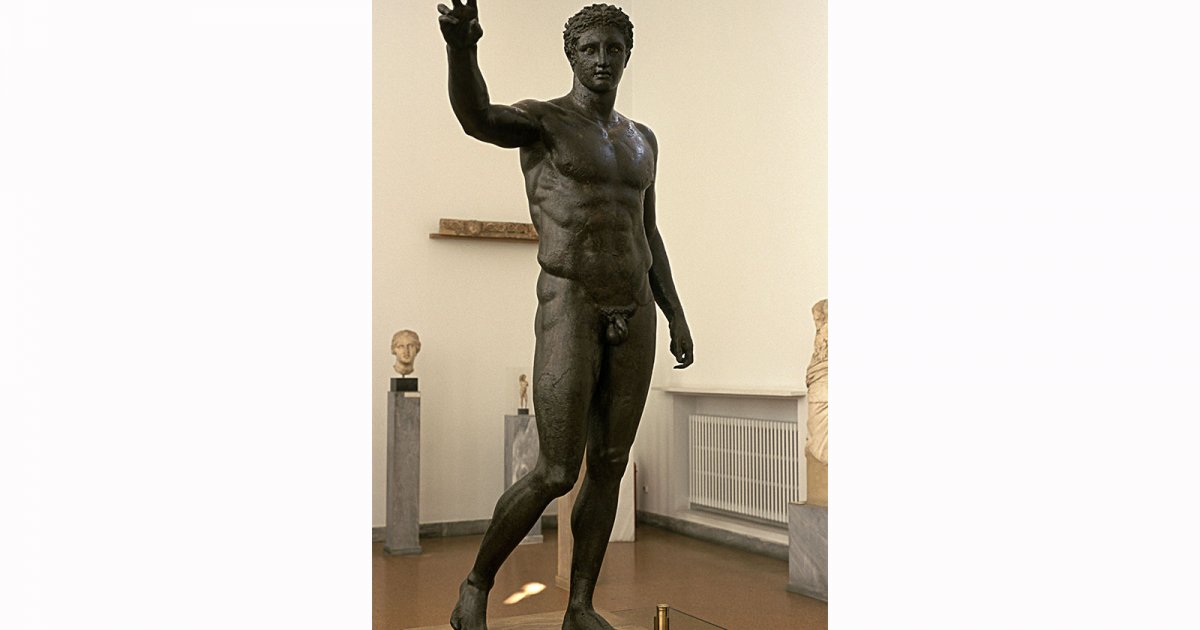ARCHEOLOGICAL MUSEUM, Antikythera Efebe Room 28
 Language: English / USA
Language: English / USA
What you’re looking at now is one of the masterpieces of the museum: the magnificent bronze statue known as the “Antikythera Youth”. It shared the fate of other bronze statues, and was recovered in 1900 from the seas around the little island of Antikythera, from the wreck of a Roman ship that was taking it to Italy along with other bronze and marble sculptures.
The work is attributed to Euphranor, and dates to around 335 BC. The statue is 196 cm tall, and was found in numerous pieces, definitively put back together in 1953.
The youth was clearly holding something in his hand, but since we do not know what, it is not possible to name the hero depicted. Various interpretations have been ventured, with some suggesting it may be Perseus, who slayed the fearsome Gorgon Medusa, holding her head crawling with snakes as a trophy; others believe the statue represents the famous myth of Paris, deemed the most handsome of men, immortalized while handing the apple of discord to Aphrodite. In both cases, however, a number of classic features of the hero figure are missing. It has also been suggested the youth may be an athlete showing off a prize.
Observe the confident execution of the solid, muscular body, perfectly balanced in its movements. The superbly handsome young man is standing securely with his weight on his left leg, the right leg bent at the end of a step, his left arm resting alongside the body and the right arm outstretched, holding the long-discussed missing object. It is worth noting that the expressive eyes in glass paste have survived, and play an important role in bringing the work to life.
An interesting fact: also salvaged from the shipwreck along with the statue was the famous Antikythera Mechanism, which you can see in room 38 of the Museum. The mechanism, a working reconstruction of which is also on display, is the oldest known mechanical calculating device, dating to between 150 and 100 BC or, in more recent estimations, to 250 BC.
The device is a sophisticated astronomical planetarium, moved by cogs and used to calculate the time of sunrise, the phases of the moon, the movements of the five planets known at the time, the equinoxes, months, days of the week and the dates of the Olympic Games.



